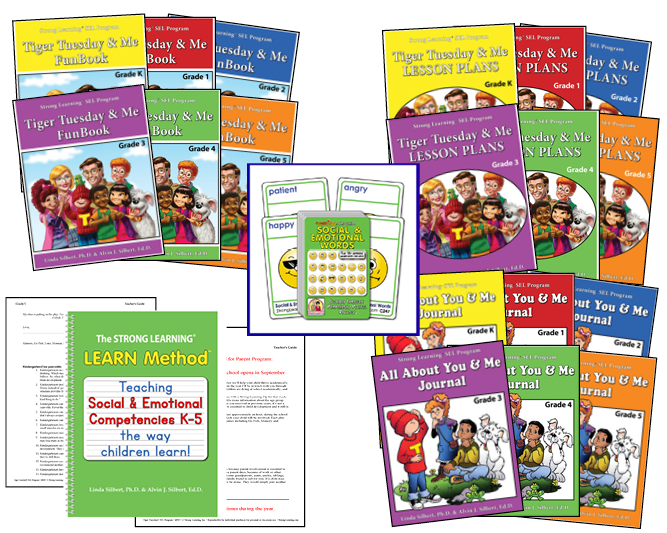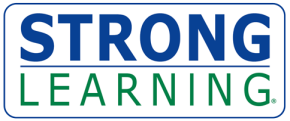Social & Emotional Learning – Program Details
Following Blooms Taxonomy, this program provides opportunities for children K-5 to progress and use skills at a Higher Order Thinking Level!
The Strong Learning SEL Program goes beyond all other programs
The Strong Learning SEL Program is a research -based model aligned with CCSS ELA standard K-5, American School Counselor Association, New York State Social Emotional Learning Benchmarks K-5, Connecticut State Social Emotional Learning Standards K-5. Fully downloadable the program comes with the following components:
Tiger Tuesday and Me: Stories and Plays,
All About You and Me Journals,
Teachers Guide with Lesson Plans,
SEL Parent Packet,
Social and Emotional Words SuperDeck,
Strong Learning LEARN Method Text Book
90 Minute Online Training

Research Proven Benefits!
Listening to Stories: Stories help children learn about people around the world, their cultures, their struggles, their thoughts and feelings. Children empathize with them as they connect with them emotionally and socially.
Acting in Plays: By performing in plays, children learn how to think quickly in case they forget a line. Children learn how to cope with anxiety and how it feels to be in someone else’s shoes.
Playing Games: By playing games together, children learn good sportsmanship, develop patience while waiting for their turn, develop the skill of dealing with disappointment and practice needed interpersonal skills.
Thinking Divergently: By being given thought provoking questions and situations, children learn to think about a character or situation in more ways than one.
Communicating through Group and Class Discussions: By participating in small or large group discussions, children are exposed to the way other children think, feel and live in addition to learning how to speak so that others will listen.
Communicating through Writing: By writing one’s thoughts and feelings in a journal, or to react to a situation in a story or play, children are given the opportunity to think about themselves and the world around them without the fear of right or wrong answers or misspellings.
Communicating through Drawing Pictures: By being given the opportunity to draw, instead of write or to illustrate their writing, children are given the opportunity to express their thoughts and feelings through art.
Coloring to Relax: By being able to take a break, during a busy and sometimes stressful school day by coloring, children are given the opportunity to relax and regroup.
Cooperating for the Good of the Group: By working in small groups or as a whole class, children learn how to cooperate. They learn how to agree with the group if it benefits the group’s goal and when to disagree if it doesn’t help the group reach its goal.
Benefits for Administrators
Educationally sound program
Includes only research based lessons
Free training session
Downloadable program keeps cost down
Benefits for Teachers
60 No-Prep lessons per grade level
Detailed teacher’s guide
Recap of child development for K-5
Free training session
Benefits for Parents
Parent & child activities
Weekly Parent Tips on child development
